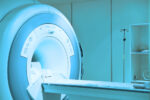AT-01 may be better at detecting transthyretin deposits in heart
Clinical trial data show benefits of imaging agent in ATTR amyloidosis

Attralus’ AT-01 may be more sensitive than a standard imaging agent at detecting toxic transthyretin (TTR) protein clumps in the heart of people with hereditary ATTR amyloidosis, a group of conditions that includes familial amyloid polyneuropathy (FAP), according to new data from a clinical trial.
The findings suggest that AT-01 imaging has the potential to help diagnose the disorder and monitor disease progression in patients with cardiac, or heart-related, amyloidosis.
“Despite recent progress in diagnosis, ATTR [amyloidosis] patients continue to go undiagnosed or are diagnosed late in their disease. A delayed diagnosis leads directly to poorer outcomes for patients,” Mat Maurer, MD, a researcher involved in the study, said in a press release from Attralus.
“We were able to demonstrate cardiac [heart] uptake with AT-01 in hereditary ATTR patients who were negative with the standard imaging, Tc99-PYP, for non-biopsy diagnosis of cardiac ATTR, implying that [AT-01] is a more sensitive diagnostic,” added Maurer, who is the Arnold and Arlene Goldstein professor of cardiology at Columbia University Irving Medical Center, in New York.
In other clinical studies for which data now is being reported, AT-01 also was found to be highly accurate at detecting the buildup of amyloid, or abnormal protein deposits, in the heart. Such deposits were found, using AT-01, in several groups of patients, including those with transthyretin amyloidosis, also called ATTR amyloidosis.
Clinical trial data show AT-01 works for all amyloidosis types
In addition to these findings, a higher AT-01 uptake in the heart was significantly associated with worse scores on standard measures of heart structure and function, the clinical trial data show.
Data from these studies were shared in several oral and poster presentations at the 28th Annual Scientific Session of the American Society of Nuclear Cardiology, recently held in Toronto, Canada.
“AT-01 has the potential to become an essential tool not only to streamline diagnosis, but also to provide a comprehensive assessment of disease burden and a means to monitor disease progression,” said Gregory Bell, MD, Attralus’ chief medical officer.
“We are impressed by the consistency of results across multiple studies and institutions,” Bell said, adding, “AT-01 has the potential to be the first and only non-invasive, pan-amyloid, whole body imaging diagnostic agent designed to detect all types of systemic [whole-body] amyloidosis across key organs.”
Systemic amyloidosis is a group of rare diseases characterized by the buildup of various types of toxic amyloids in the body’s tissues and organs, affecting their function. The most common forms are ATTR amyloidosis and light-chain (AL) amyloidosis.
FAP is a hereditary type of ATTR amyloidosis that mainly affects nerve cells, but also leads to the accumulation of toxic TTR clumps in the heart and other tissues. When TTR amyloids mostly builds up in the heart, damaging it, it is called ATTR amyloidosis with cardiomyopathy, or ATTR-CM.
The gold standard for detecting amyloid buildup is an invasive tissue biopsy, but the diagnostic process for patients can be long.
“Diagnosis is a challenging and time-consuming process for systemic amyloidosis patients, with many going years without an accurate diagnosis, and losing critical time in the process,” said Ahmad Masri, MD, of the Oregon Health & Science University’s Knight Cardiovascular Institute.
Also known as 124I-evuzamitide, AT-01 is a pan-amyloid imaging agent designed to detect and visualize all types of amyloid when used in combination with a PET or CT scan. It is therefore expected to help in the diagnosis and management of various forms of systemic amyloidosis.
A previous Phase 1/2 trial (NCT03678259), conducted at the University of Tennessee, found that AT-01 could detect amyloid in a number of organs, including the heart, and could distinguish between AL- and ATTR-amyloidosis.
AT-01 shows diagnostic accuracy, success in monitoring disease
Now, as part of an ongoing Phase 2 study (NCT05968846), researchers looked at long-term changes in AT-01 uptake among 19 patients — nine with AL and 10 with ATTR amyloidosis. All were previously found to be positive for cardiac AT-01 uptake in that clinical trial.
These patients were treated for their condition and underwent another AT-01 scan after a median of three years. The results, presented in a poster, showed that among those with ATTR amyloidosis, cardiac amyloid load decreased by an average of 2.4%. However, despite therapy, only one person saw a decrease of at least 25%.
The researchers believe these findings demonstrate that AT-01 imaging can be used to monitor disease progression and treatment responses.
In another poster, Bell presented findings from 27 systemic amyloidosis patients involved in an Attralus-sponsored Phase 2 trial (NCT05235269). These results indicated that AT-01 uptake quantification was consistent across multiple scans in the same patient, indicating it can reliably be used to monitor disease progression.
AT-01 also was generally found to be safe and not associated with any serious adverse events.
In an oral presentation at the conference, Maurer and a colleague demonstrated the higher accuracy of AT-01 for diagnosing cardiac involvement among people with hereditary forms of ATTR amyloidosis.
Among 10 patients who did not show cardiac uptake of Tc99-PYP, a standard imaging agent for cardiac amyloidosis, eight (80%) were positive for AT-01 uptake. A diagnosis of cardiac amyloidosis was confirmed in all eight patients through heart biopsy, imaging, or genetic tests.
Additionally, Masri, also the director of Oregon Health’s Cardiac Amyloidosis and Hypertrophic Cardiomyopathy Centers, presented two posters with data related to the results of a clinical trial involving 36 cardiac amyloidosis patients and 14 people who served as controls. Each of the controls had signs of heart disease and systemic amyloidosis, but cardiac amyloid had been ruled-out.
AT-01 showed a 100% sensitivity and specificity for diagnosing cardiac amyloidosis, meaning it correctly identified all cardiac amyloidosis patients and ruled out all of the control participants.
The AT-01 data we generated provide an impressive road map to detecting and quantifying amyloid deposits … with the potential to detect amyloid earlier in the disease process and the ability to monitor organ specific disease progression or response.
There also were moderate and significant associations between AT-01 uptake and MRI measures of heart structure and function, with higher uptake being linked to worse scores. This indicated that “AT-01 cardiac PET/MRI provides comprehensive diagnostic evaluation of cardiac structure, function, and surrogates for amyloid load,” the release stated.
“The AT-01 data we generated provide an impressive road map to detecting and quantifying amyloid deposits … with the potential to detect amyloid earlier in the disease process and the ability to monitor organ specific disease progression or response,” Masri said.
The diagnostic accuracy of AT-01 also was demonstrated in a poster concerning a study at Brigham and Women’s Hospital, in Boston, that involved 12 AL-related cardiomyopathy patients, 12 individuals with non-hereditary ATTR-CM, and 20 controls.
Data from this study also showed that AT-01 uptake was similarly correlated with some heart structural and functional measures.
Altogether, according to Maurer, “the data from AT-01 are encouraging as an imaging agent that could directly detect amyloid deposits and diagnose patients earlier in their disease.”
“This could be invaluable for patients and would be a welcome addition to our practice for more prompt and accurate diagnosis,” Maurer added.








